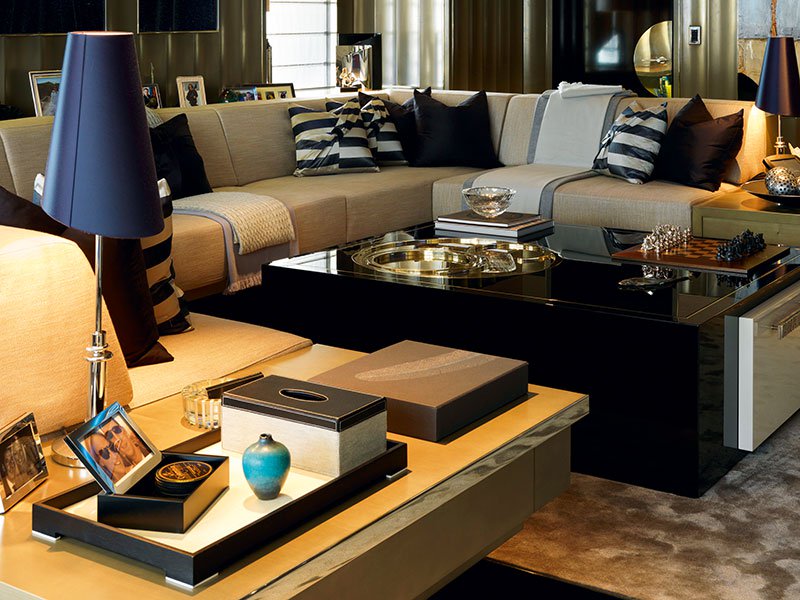Yacht Design: A New Wave of Interiors
Advances in technology and evolving trends in design and materials mean the interior of your yacht can now be as fabulous and comfortable as your home ashore
Advances in technology and evolving trends in design and materials mean the interior of your yacht can now be as fabulous and comfortable as your home ashore
As Polly Sturgess says, “Spending time with your clients helps you understand who they are, what they like, and how they like to live. This really does dictate the style of their boat.” Director of interior decoration at yacht designer Redman Whiteley Dixon (RWD), which has completed more than 70 craft since 1993, Sturgess is an authority on the subject.
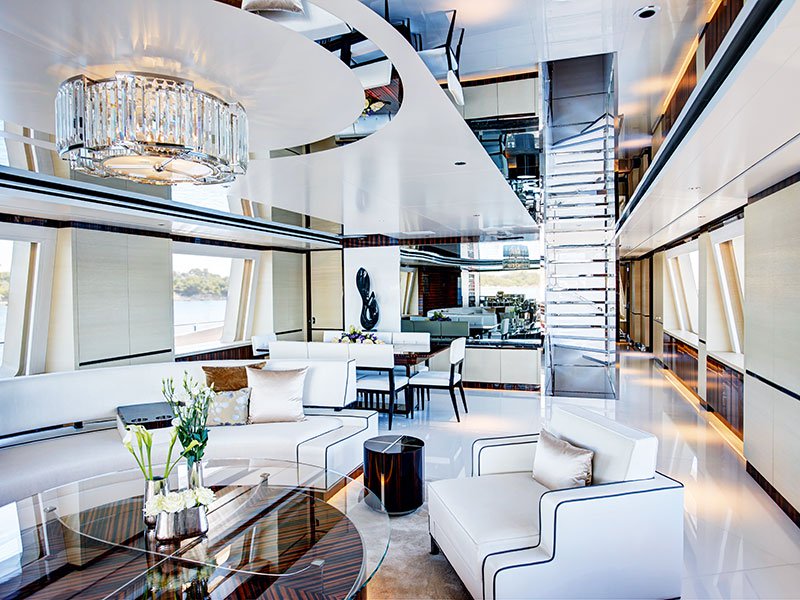
Having commissioned your yacht and made decisions on size, power, and capacity, you’ll need to start work on how it will look, and feel, on the inside. In the main, yacht designers offer both exterior and interior design, but some clients prefer to entrust their yacht’s interior to a different designer.
Initially, your designer of choice will want to find out your ambitions for the yacht – where you’ll sail, who with, and what you plan to do aboard. This information will inform their designs, and these discussions will often involve reference boats – other yachts you’ve admired, and showcase vessels you’ve seen at boat shows around the world, or in the designer’s portfolio.
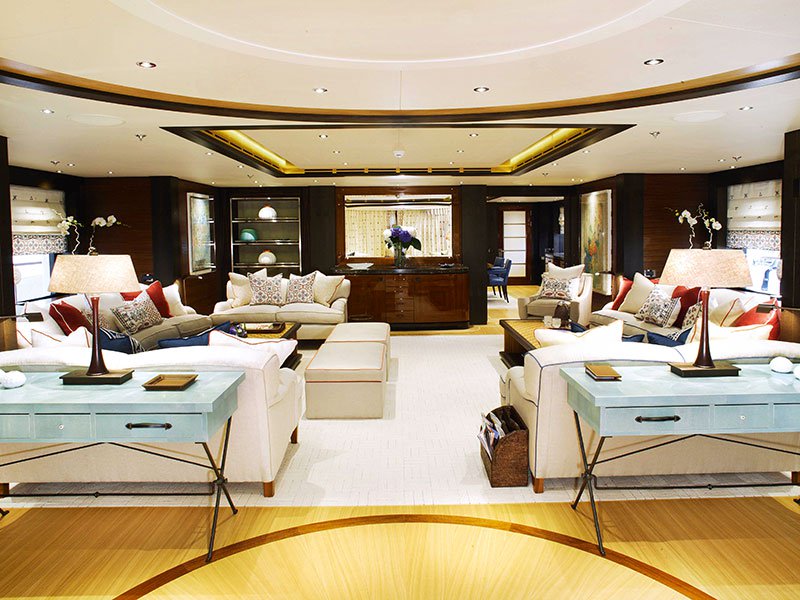
More importantly, a designer will use these initial meetings to try to understand your lifestyle. Designers have different approaches to this – Sturgess favors real-time interaction, while Andrew Winch, founder of Winch Design, takes a different tack. “As a studio, we have to understand how our clients live. We have to experience it. One client told us the five hotels he really likes in Paris, so we’re sending people to stay in each of them,” he explains.
After these first discussions, the designer or design studio will produce a concept for you to review. Most people like to be involved with the design of their yacht, but designers know that their clients have busy, often international, lives, so making time to discuss fabrics and furnishings can be difficult.
There are various ways designers solve this. Luiz de Basto, of De Basto Designs, likes to make things as easy as possible for his clients. “We create a dedicated website with password access for each individual project. We upload slideshows, images, and renderings, so wherever the client is in the world, they can log in and see what we are doing.”
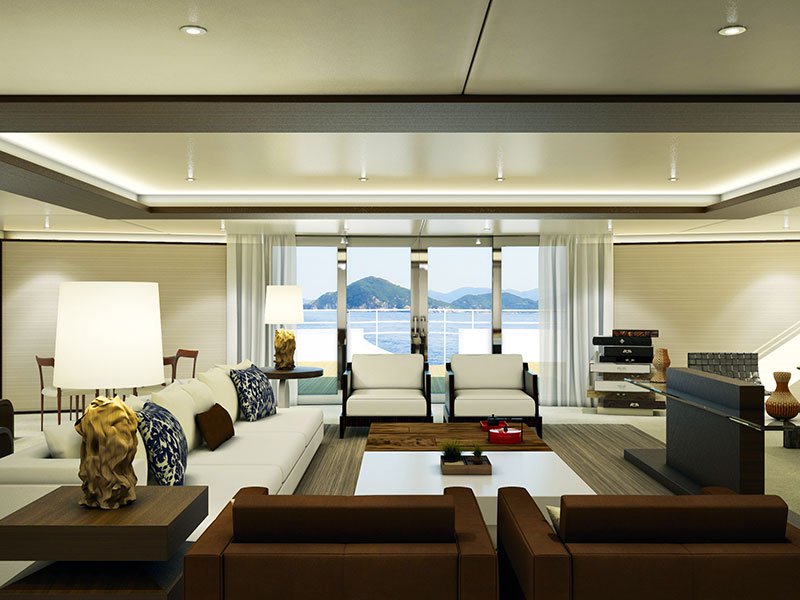
Sturgess invites her clients to RWD’s offices in Hampshire, England. “Clients stay at a nearby hotel, where they can land their helicopter and are beautifully looked after,” she says. “Yes, we do a lot of work and make a lot of decisions, but hopefully they come out of it thinking, ‘That was fun.’ ”
Designers know that their clients have busy, often international, lives, so making time to discuss fabrics and furnishings can be difficult
Sturgess isn’t exaggerating about the scale of work: there are thousands of decisions to be made when designing your yacht’s interior, and owners today have more options than ever before. As Martin Kemp, of Martin Kemp Design, explains: “Historically, yacht interiors were much the same – poorly thought out with bland, cream color palettes. Nowadays, superyacht interior design is becoming bolder than it was in the past, with designers creating more refined design schemes.”
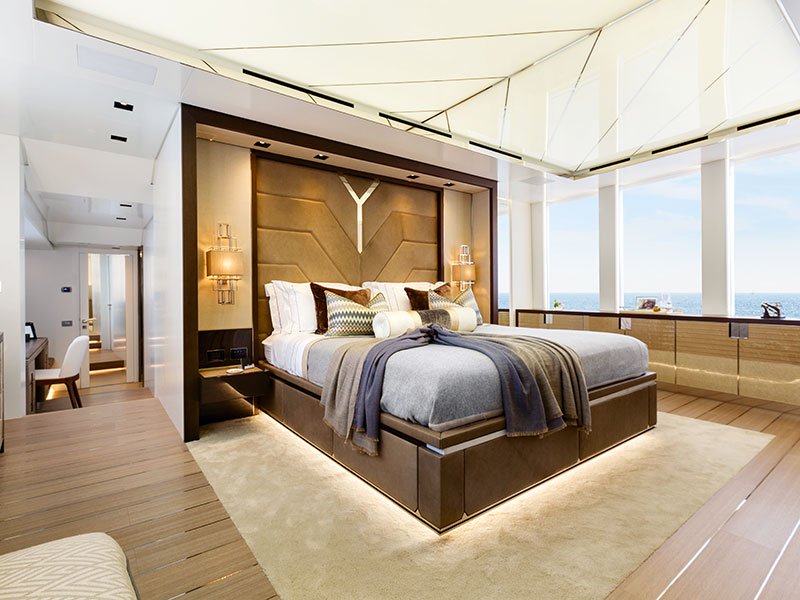
This is partly down to technological advances enabling experimental design schemes. As de Basto observes: “Five years ago, all boats needed to have rounded edges, as did their interiors. But nowadays, you see more ‘modern’ hard edges. This is because stability technology has improved, meaning designers can make contemporary items of furniture without the fear of harming anyone on board during rough weather.”
As well as amplifying the possibilities of interior design, these advances have allowed for the incorporation of a whole range of new features into yacht design. When designing your vessel, it’s no longer enough to consider how many bedrooms to have and whether you want a gym. Today, clients can opt for extras from pizza ovens and swimming pools, to nightclubs and basketball courts-cum-helipads.
It’s rare that a client will suggest an idea that a designer cannot complete, although de Basto recalls, “Several years ago, we had one client who asked for a pool table on board. I had to explain that this wasn’t a good idea, although with today’s stability technology, you never know.”
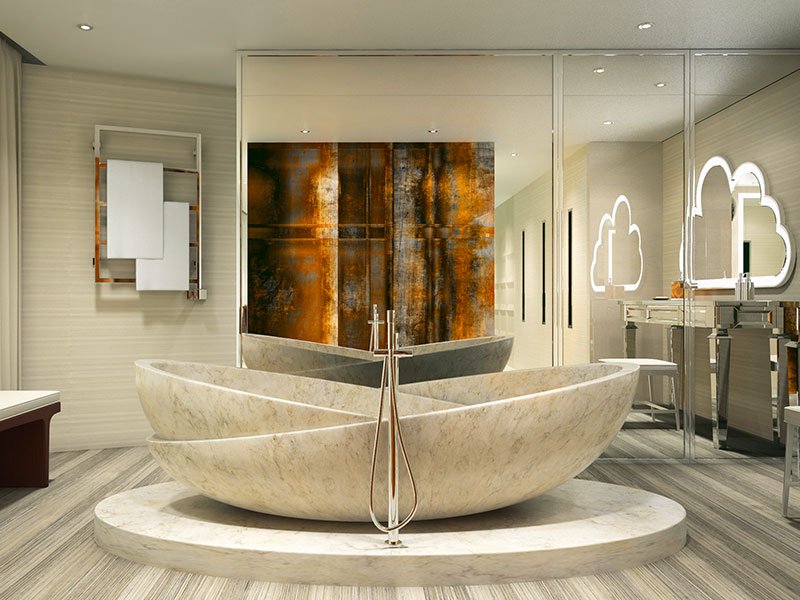
Indeed, as yacht designer Igor Lobanov says: “Everything is possible – the only limit is the cost.” Most constraints, however, come from a much more mundane source: the Passenger Yacht Code (PYC). This applies to any yacht accommodating 13-36 passengers, and dictates the kinds of materials that can be used on board, access, and so on. And there are other serious practicalities to consider, too. Ignacio Oliva-Velez, head of interiors at Winch Design, says: “Over the past 10 years there has been an increase in clients requesting safe rooms on board for their personal protection.”
Just as you want your guests to be wowed by the design of your boat, and to feel relaxed in their quarters, you need to consider the comfort of the crew who will be manning it. Kemp explains: “It’s universally acknowledged that a happy, well-rested crew is key to operating a successful and safe super yacht, so it’s important to create intuitive and spacious crew facilities.”
Throughout the process, clients will be shown detailed drawings and renderings of their yacht. Accuracy is vital here, says de Basto. “Everything in these renderings has to be correct. When the boat is ready it should be like walking into the drawings.”
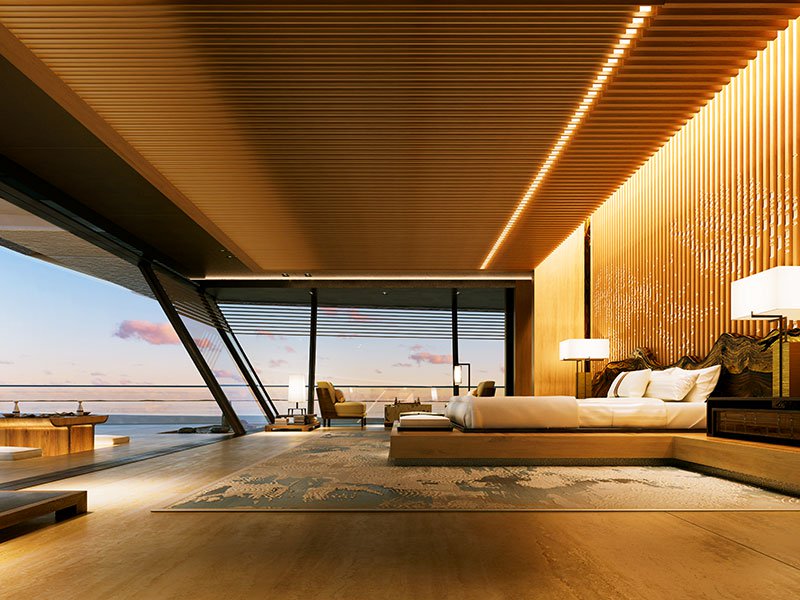
Once you’ve made all the big design decisions, you can start to address details like decor and furnishings. This is where it becomes possible to create a truly unique yacht, and designers are seeing more and more requests for bespoke, custom-made decor, from unique wall paneling to hand-sewn cushion covers.
As the design team at Sinot Exclusive Yacht Design, which unveiled its concept for a stunning 590-foot motor yacht, Symmetry, at the 2015 Monaco Yacht Show, observes: “Sometimes, the perfect item to complement a space isn’t available, so it has to be custom made. For example, the headboard in the owner’s state room is a unique inlay of two different types of wood, reflecting a pattern of tree branches and clouds.” The company uses near-photographic 3D visualization technology to showcase exactly what the finished results will look like.
One De Basto project, Saluzi, has 16 cabins, each with a contrasting design. As de Basto explains: “They’re all different in their finishes and colors – it’s not a monotonous interior in the name of consistency. The owners wanted to have fun on board and this provided a little surprise.”
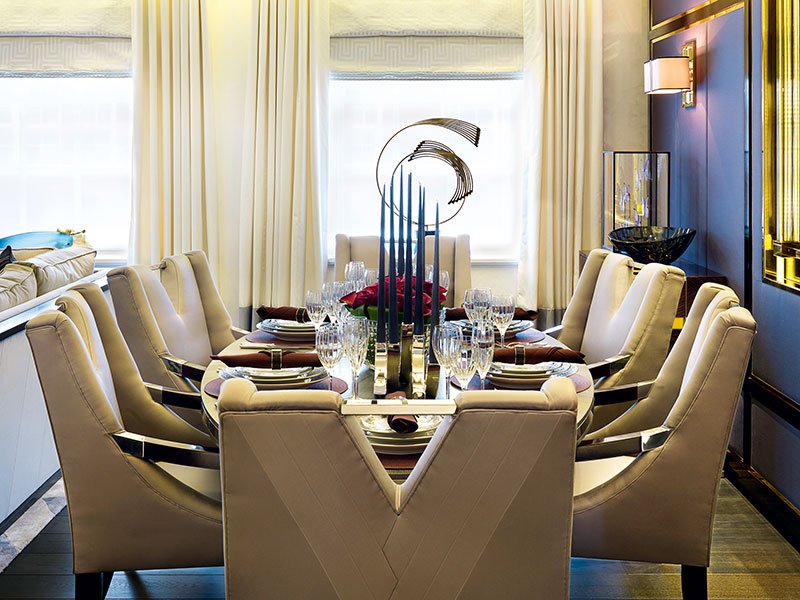
Upholsterer Aiveen Daly, who has worked on superyachts including Candyscape, emphasizes that it’s the little details that bring a yacht to life. “We’re currently working on a project that features an array of hand-stitched leather bags in which to present luxurious welcome gifts in the guest bedrooms. It’s these very special things that can set the interiors apart,” she says.
While these custom-made pieces are undoubtedly elegant, Daly believes it’s important to consider the practicalities of your yacht’s interior scheme, and who will be sailing with you. Her clients will often commission two sets of furnishings for their yacht, for example. “If you’ve got your grandchildren on board, you’ll want certain types of cushions. Then, in the evening, you can swap these for some dressing items so you’re ready for friends and clients coming on board for cocktails.”
While designing a yacht is a lengthy process, it should be an enjoyable one. As de Basto says: “We can be working together for several years, so the personal chemistry needs to be there. This is a fun process – and it needs to be fun for the client.”
